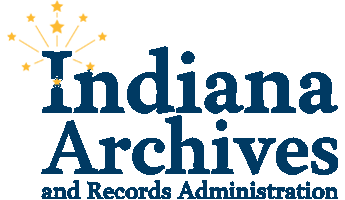 Portrait of Robert Owen, ca.1800
Portrait of Robert Owen, ca.1800
The Owenite Community: New Harmony became the site of Robert Owen's utopian experiment during the two years following the Harmonists' departure. In 1825 Robert Owen (1771-1858), a Welsh manufacturer, social reformer, and philanthropist, and William Maclure (1763-1840), a Scottish philanthropist, purchased the entire town of Harmonie, which Owen renamed New Harmony, and where he founded a new social order. They assembled from Europe and the eastern United States a group of renowned teachers and scientists, many of whom arrived from Pittsburgh in January, 1826, on the keelboat Philanthropist. Among the passengers aboard the celebrated "Boatload of Knowledge" were William Maclure - geologist, educator, philanthropist and Owen's principal associate and financial partner in the New Harmony adventure; and Thomas Say - zoologist, entomologist, original member of the Philadelphia Academy of Natural Science, curator of the American Philosophical Society and professor of natural history at the University of Pennsylvania.
In 1827, Robert Owen dissolved his community and returned to Scotland. Owen's system of communal life was dead when its founder departed in June. But as the New Harmony experiment was dying, William Maclure's educational and scientific enterprises were beginning to thrive. Maclure opened his school to orphans, thus freeing the venture from any dependence on the population of New Harmony. Maclure's educational views were published by his own press as well as the scientific achievements of his colleagues through the Society for Mutual Instruction. A direct outgrowth of Maclure's society was the Workingmen's Institute and Library which resulted from his correspondence with the working men of New Harmony through Achille Fretageot.
Owen's five children and many others remained in Indiana after Owen and Maclure departed, and New Harmony basked in a cultural and scientific afterglow until the 1850's. Drawn to New Harmony were such notable figures of the time as French naturalist Charles Alexander Lesueur, educator Joseph Neef, inventor and libertarian Josiah Warren, Dutch scientist Gerard Troost, educator Marie Duclos Fretageot and Swiss artist Karl Bodmer. Believing that education was the key to a new and better way of life, the citizens of New Harmony made many contributions to society: the first kindergarten and infant school in America, the first trade school, the first public school system to offer equal education to girls and boys, the first free public library and the first civic dramatic club with a written constitution and bylaws. As well, it was the original headquarters of the United States Geological Survey. The first women's club was also organized in New Harmony.
Prominent New Harmonites include:
Robert Dale Owen (1801-1877), oldest son of Robert Owen and educated in natural science and medicine, was a philosopher and social reformer. He was a Democrat in the Indiana State Legislature from 1836 to 1839 and 1851 to 1852, member of the U.S. House of Representatives from 1843 to 1847, and minister to Naples from 1852 to 1858. As a Congressman he drew up and introduced the bill which created the Smithsonian Institution. Abraham Lincoln was an admirer of his ideas on social reform, which included suffrage for women and the abolition of slavery.
William Owen (1802-1842), second son of Robert Owen, was an author, editor of the New Harmony Gazette, founder of the New Harmony Thespian Society, and manager of the Owen community during his father's absences.
David Dale Owen (1808-1860), third son of Robert Owen, educated in geology and chemistry, received his medical degree from the Cincinnati Medical College, but devoted the greater part of his life to geology. After completing the geological survey of Indiana, he was appointed the first State Geologist. In 1839 he became the Geologist for the United States, and because of him New Harmony became the first headquarters of the U.S. Geological Survey from 1839 to 1856. He was also State Geologist for Iowa, Minnesota, Kentucky, and Arkansas, and helped design architectural plans for the Smithsonian Institute.
Richard Owen (1810-1890), youngest son of Robert Owen, was educated in geology, chemistry and medicine; he followed in the footsteps of his brother David, becoming the Indiana State Geologist as well as the Geologist for the United States. He was an officer during the Mexican and Civil wars, a professor at Indiana University from 1864 to 1872 (Owen Hall was named for him) and the first president of Purdue University, serving from 1872 to 1874. He retired to New Harmony.
Jane Dale Owen (1807-1880?), third daughter of Robert Owen, married Robert H. Fauntleroy and established a school for young women in New Harmony.
Madame Marie Duclos Fretageot (1775?-1833), mother of Achille, educator and associate of William Maclure, retired to her home in Paris, France.
 Achille E. Fretageot, ca. 1865.
Achille E. Fretageot, ca. 1865.
Achille Emery Fretageot, (1813-1873), son of Achille H. and Marie Duclos, co-founder of the Workingmen's Institute and Library, and life-long resident of New Harmony.
